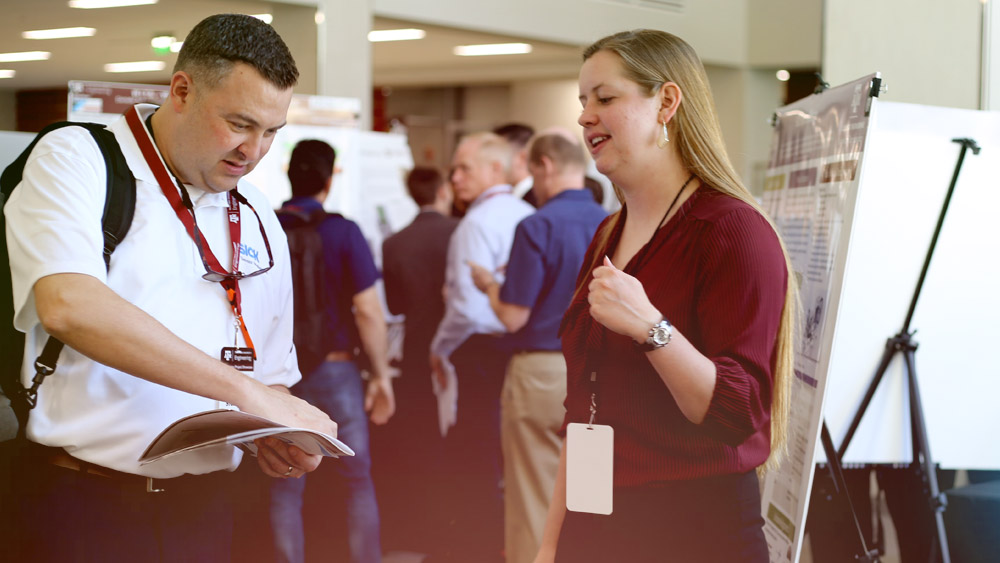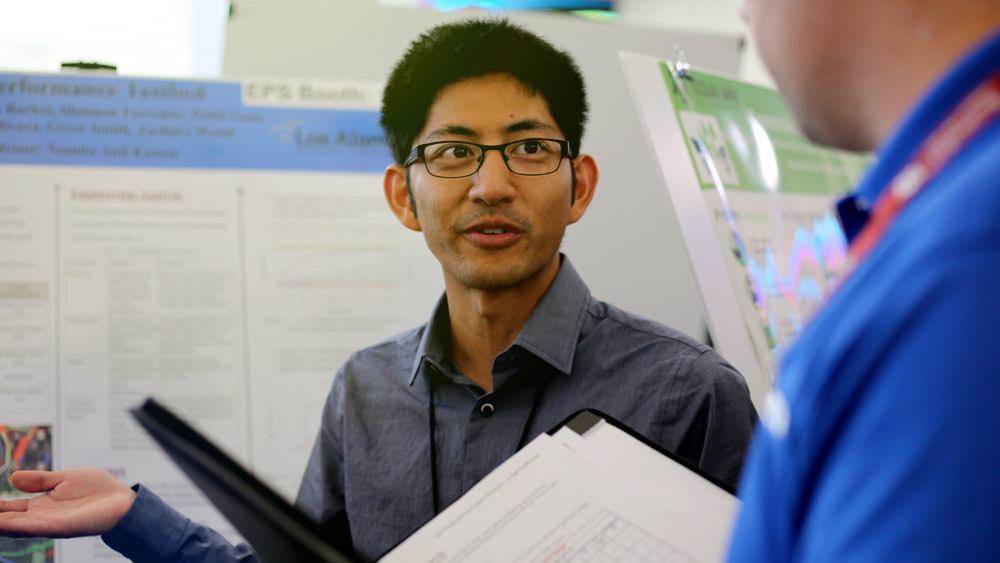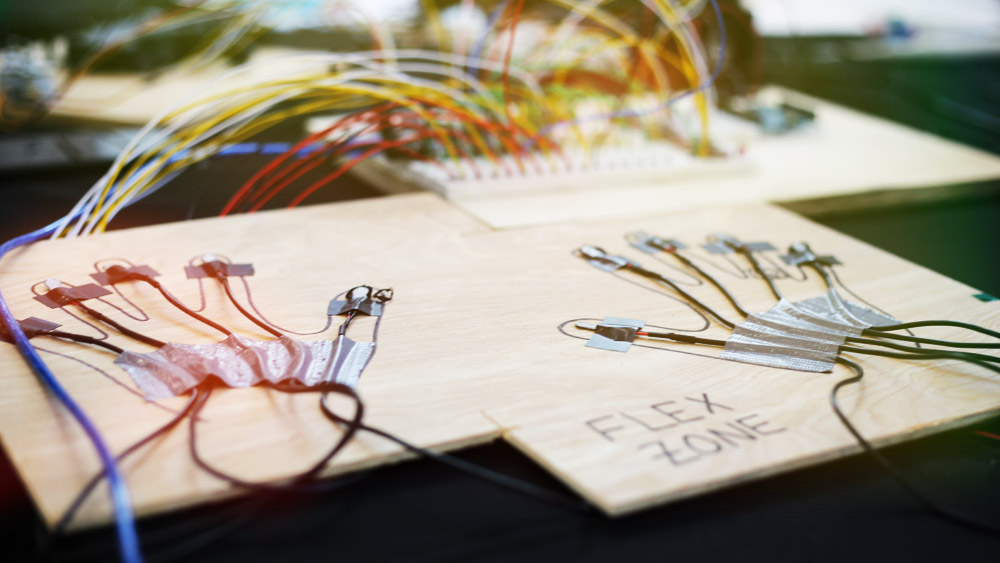More than $10,000 was awarded at the 2019 Engineering Project Showcase, which featured more than 230 team projects showcasing the work of over 1,200 engineering students. These projects include departmental capstone design projects from engineering departments across the Texas A&M University College of Engineering, and multidisciplinary team projects such as the AggiE_Challenge program and student design competitions.
Over 150 industry judges came to the event held in the Zachry Engineering Education Complex, many of them Aggie engineers themselves. Several made a point to praise the program’s rigor in order to have inspired that level of innovation and diversity in projects in the showcase.

“We have one of the largest engineering project showcases in the nation,” said Magda Lagoudas, executive director for industry and nonprofit partnerships. “Every year the showcase grows larger as students see the benefit of these project experiences. Industry judges are continually impressed with their dedication and skills they demonstrate here.”
John Cavolowsky, NASA director in the Transformative Aeronautics Concepts Program, has judged two years in a row. He said he was glad an exception was made for a non-Aggie, because he so enjoys getting to meet the students and see their projects.
“For me, a recovering engineer, this is just a blast, seeing the passionate students, challenging work and tasks they are taking on and the progress they’re making," said Cavolowsky. It’s been a kick.
“We always take ourselves back and ask, ‘What would we have done were we in this position, 30 or 40 years ago?’ Boy, the capability, skills and talent that the students bring today are just phenomenal. I couldn’t compete with the talent that is here. The size, effort and quality of the work coming out of here is just great.”

Industry judges praised the inter- and multi-disciplinary aspects of the team projects they saw, acknowledging that this is how engineering works in the real world.
An AggiE-Challenge team made up of students from five different majors was working on a solution for energy efficient water desalination.
“Only 1% of the Earth’s water is available for drinking,” said Ammarah Junaid, a chemical engineering student. “The rest is frozen in ice caps or present in salt water. We want a solution that’s cost, time and energy efficient. We’re making graphite films to be used as a filter, separating salt molecules in water, to clean the water and make it suitable for drinking.”

The showcase gives many seniors the opportunity to display the culmination of what they’ve learned and applied in their senior design class. Students like Nathan Fulbright, a mechanical engineering senior, were provided with a challenge by a company for a senior capstone project. His team was asked to automate the hydraulic function used in changing out the front-end implement of a tractor for Kubota Tractor Corporation.
“Kubota was an overall satisfied sponsor,” said Fulbright. “We showed it’s possible to do. Even though we experienced a setback with a mechanism failure, and it doesn’t look as smooth as we’d hoped it to, we showed a proof-of-concept and that it can be done.”
Another capstone design team presented their rehabilitation solution for Lynntech, Inc. that allowed the people suffering from muscular atrophy functionality of their hands, while providing rehabilitation of the fingers.
“People who suffer from muscular atrophy, the nerves in their fingers are damaged,” said biomedical engineering student Amran Kang. “They have minimal function in their fingers. We’ve created an exoskeleton that also acts as a rehabilitation device. As they get stronger, we can increase the threshold, allowing them to recover functions.”
“We believe this will impact in the millions,” said Cynthia Rojas, fellow team member and biomedical engineering student. “There are already devices on the market that help with day-to-day function, but our device improves on those, using low-cost materials that will be lightweight, not cause discomfort and be easy to use.”
This is the seventh year for the showcase. Each year, it grows as more students challenge themselves to create, innovate and apply the knowledge they gain in the classroom. Sponsors of the event were: Emerson, Daikin, Shell, Baker Hughes - A GE Company, Houston Airports, Boeing, Bell, Peak Nano, Phillips 66 and National Instruments.